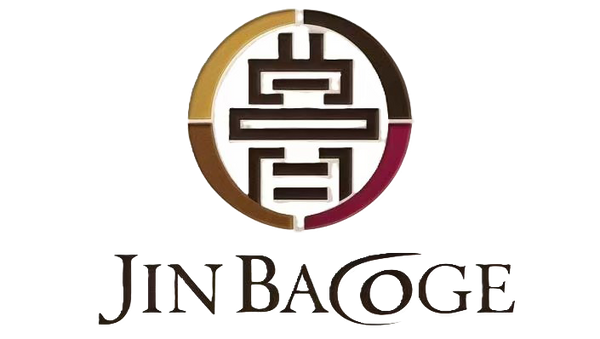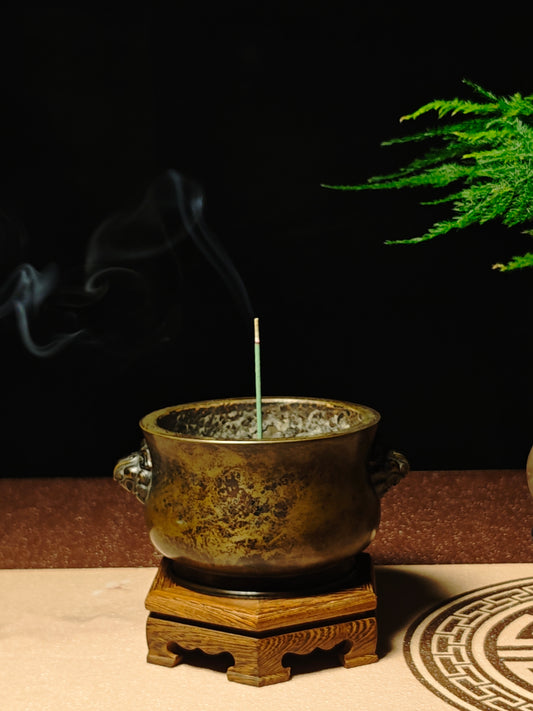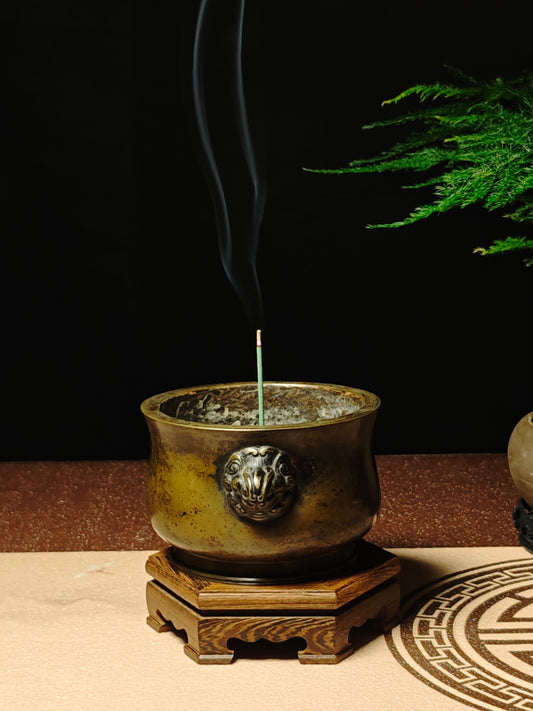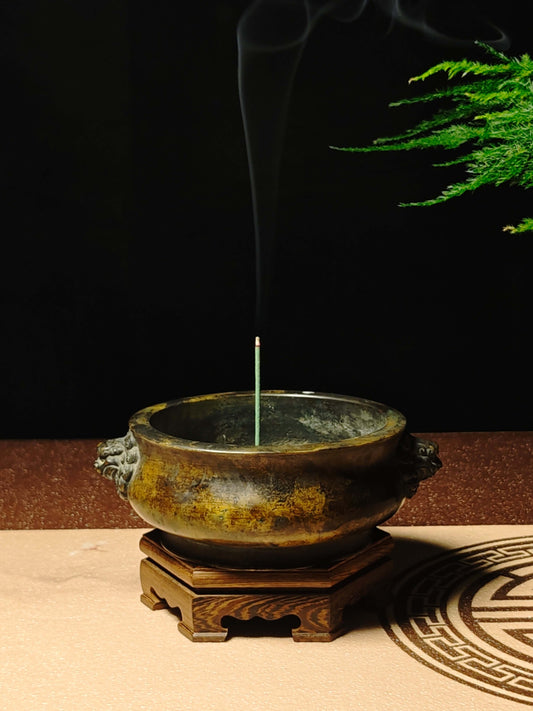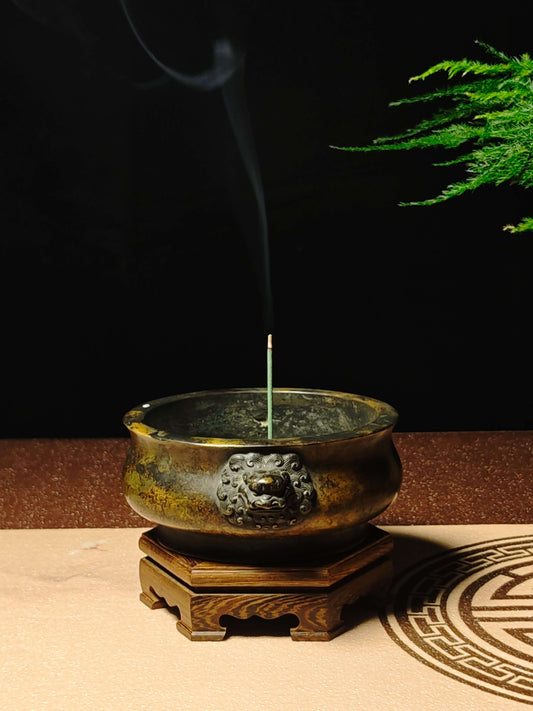Lion-headed Incense Burner
-
vesselofzen Lion-headed incense burner (1.05kg)
Regular price $1,056.16 USDRegular priceUnit price / per$1,288.00 USDSale price $1,056.16 USDSale -
vesselofzen Lion-headed incense burner (1.3kg)
Regular price $1,138.16 USDRegular priceUnit price / per$1,388.00 USDSale price $1,138.16 USDSale
Collection: Lion-headed Incense Burner
"Guardian of Harmony: The Lion-Head Bronze Censer – Where Imperial Power Meets Spiritual Protection"
In the opulent courts of Ming Dynasty China (1368–1644), where artistry intertwined with mysticism, the Lion-Head Bronze Censer emerged as a symbol of imperial authority and spiritual guardianship. Forged in sacred fire and shaped by myth, this artifact carries a legacy of protection, prosperity, and profound cultural wisdom — a testament to China’s age-old reverence for harmony between the mortal and divine.
1. Origins: A Royal Tribute to Divine Guardians
The story begins in the 15th century, during the reign of Emperor Xuande, whose passion for bronze craftsmanship birthed the legendary Xuande censers. Among these masterpieces, the Lion-Head Censer held a unique purpose: to channel the protective energy of the lion, an auspicious beast revered in both Chinese folklore and Buddhist tradition.
Legend tells of a royal mandate: fearing unrest, the emperor commanded artisans to fashion censers with lion-head handles, believing the creature’s fierce gaze would "ward off evil and safeguard the empire". These lions, inspired by Buddhist temple guardians (Shishi), embodied strength and sanctity — a fusion of imperial power and spiritual devotion.
2. Symbols in Bronze: The Language of Protection and Harmony
Every detail of the Lion-Head Censer speaks to ancient beliefs:
Lion-Head Handles (狮首耳): The majestic lion, a Buddhist Dharma protector, symbolizes courage, protection, and dispelling negativity. In Chinese lore, lions ward off malevolent spirits, making the censer a guardian of both physical and spiritual spaces.
Sturdy Feet (三足 / 四足): Anchored by three or four rounded feet, the censer honors the Three Talents (三才) — heaven, earth, and humanity — or the Four Directions, ensuring stability and balance.
Ornamental Patterns (纹饰): Intricate meander patterns (回纹) symbolize "endless vitality", while lotus motifs (莲纹) echo Buddhist purity. These designs weave together earthly beauty and divine blessing.
3. Evolution: From Imperial Altars to Scholar’s Studios
Ming Royalty: Reserved for imperial rituals and palace altars, the Lion-Head Censer was a symbol of imperial might and spiritual insurance, its secret bronze alloy (infused with gold, silver, and tin) developing a celestial luster.
Qing Dynasty & Beyond: As the Ming fell, the censer’s allure endured. Qing emperors commissioned replicas, and scholars adopted it for "incense meditation" (焚香静思), drawn to the lion’s protective energy and the censer’s elegant form. It became a staple of literati culture, bridging faith and aesthetics.
Modern Revival: Today, master craftsmen revive the Ming’s lost-wax casting technique, recreating the Lion-Head Censer with meticulous care. Each piece merges historical authenticity with contemporary design, inviting modern seekers to embrace its protective legacy.
4. Craftsmanship: Alchemy of Strength and Beauty
The Lion-Head Censer is a triumph of ancient metallurgy:
Sacred Alloy: Recreated with a proprietary blend of copper, gold, and silver, the censer develops a rich, aging patina — a mark of time and reverence, growing more majestic with use.
Lost-Wax Mastery: Cast via the Ming-era lost-wax method, each censer is a unique work of art. Wax molds are sacrificed to birth flawless bronze forms, ensuring every lion’s gaze, every curve, carries the soul of history.
A Guardian for the Modern Age
Light incense in a Lion-Head Censer, and you awaken a 600-year-old legacy of protection and harmony. It is more than a vessel; it is a cultural talisman, a bridge to imperial China, and a reminder that beauty and strength can coexist.
Invoke the guardian’s power. Let the Lion-Head Bronze Censer be your anchor in a chaotic world — a symbol of imperial blessing, spiritual protection, and timeless cultural majesty.
Crafted to honor Ming traditions and the lion’s sacred legacy, this censer is a living heirloom — a testament to the enduring allure of China’s protective spirits and artistic genius.
